Macronutrient Tracking 101 Podcast
Not feeling like reading today? Feel free to our latest podcast episode on this topic.
What Are Macros?
Macros are short for macronutrients, the nutrients your body requires in large quantities to function properly and sustain life. Unlike vitamins and minerals (micronutrients), macros provide calories and energy.
There are three primary macronutrients: carbohydrates, fats, and proteins.
Each of these plays a unique role in fueling your body, maintaining performance, and supporting overall health.
Why Are Macronutrients Important?
Macronutrients are needed to provide energy, build and repair tissue, and regulate processes within the body.
Carbohydrates include fiber, starches, and sugars. Your body breaks these down into glucose, its preferred energy source, which fuels everything from your brain to your muscles.
Proteins are chains of amino acids, which act as the building blocks for muscle, hormones, and enzymes. Without protein, your body can’t repair tissues or build lean muscle.
Fats serve as long-term energy reserves, insulation, and protection for your organs. They’re also critical for hormone health and for absorbing fat-soluble vitamins (A, D, E, K).
Importance Of Tracking Maintenance Calories First
Before tracking macronutrients, you need to understand your personal needs. It’s important to find your maintenance calories, or the number of calories you need to maintain your current weight.
When you know your maintenance calories, you’re able to adjust your eating habits based on your fitness goals and body composition. This number allows you to understand if you’re in a deficit or a surplus in order to burn fat or build muscle.
To find your maintenance calories, you will need to use an app or another method to track your caloric intake.
- Track all food and drink, including alcohol and snacks (more on alcohol tracking below)
- Record steps, workouts, and sleep to get context.
- Watch for weight fluctuations across at least one week (longer is better, especially if you have a menstrual cycle where weight can fluctuate as hormones change).
Make sure you track everything for at least one entire week, even if you have a treat day. Understanding your normal habits is important and that includes social life, lunch out at work, or unplanned meals.
Apps can make the process easier, especially when dining out or estimating portion sizes. Once you know your maintenance calories, you can create a plan. If calories are consistently too low, you may need to reverse diet (slowly increase intake to restore metabolism and energy). You can learn more about this in our reverse dieting guide. It’s important to build enough muscle and find a sustainable maintenance number to cut from before dieting down.
Calories in Macronutrients
Each macronutrient provides a specific number of calories per gram:
- Protein = 4 calories/gram
- Carbs = 4 calories/gram
- Fat = 9 calories/gram
Fun fact: alcohol is actually 7 calories/gram and should be tracked a specific way if you have macronutrient targets. This is because calories from alcohol are considered “empty calories” which are not beneficial for fuel and muscle growth.
How To Track Your Macros
Marco tracking is tracking the three macronutrients: protein, carbohydrates, and fat. Macro tracing is not the same as only tracking calories, but it does require understanding your caloric needs.
Use An App
Apps like MyFitnessPal make macro tracking more manageable. You can save meals and recipes, log daily food, and even analyze trends over time. Apps also help you spot patterns: which foods leave you feeling full, which throw off your macros, and how consistent you’re being.
Weigh Your Food
Accuracy matters. Using a kitchen scale teaches you what actual serving sizes look like. Eventually, you’ll be able to eyeball more confidently. Solids should be weighed, and liquids can be measured with cups or weighed in grams/mL.
Always Track Protein
Protein is the most important macro to track, so if you only track your protein, it’s good enough. Usually, if you are eating enough protein, your other macros will fall into place, especially if you’re eating a whole/natural food diet. In general, 4 oz of meat, or a fist sized amount of meat, is around 25-28g of protein. The best way to track your protein is by weighing it. Weighing raw meat can be cumbersome, so cook your meat separately to weigh it before adding it to the rest of your meal. If you are eating enough protein, your other macros will usually fall into place, especially if you’re eating a whole/natural food diet.
How Much Of Each Macronutrient Do You Need?
Protein
General guideline: 0.6–1g of protein per pound of bodyweight per day.
For example, if you weigh 130 lbs, aim for 78–130 grams daily.
Adequate protein intake supports muscle growth, helps prevent age-related muscle loss, improves satiety, and can assist with fat loss.
As long as you eat enough protein, you can fill in your other daily caloric intake with fats and carbs as you see fit.
“Higher protein intakes may help prevent age-related sarcopenia, the loss of muscle mass, and strength that predisposes older adults to frailty, disability, and loss of autonomy. Higher protein diets also improve satiety and lead to greater reductions in body weight and fat mass compared with standard protein diets, and may therefore serve as a successful strategy to help prevent and/or treat obesity.”
If you want to maintain strength, independence, and healthy body composition as you age, prioritize protein.
Carbs
Not all carbohydrate sources are created equally. In fact, our bodies may respond in different ways to the same carb source. However, there are some baseline things to consider for anyone when considering carb choices:
Low-quality carbs (white bread, sugary cereals, crackers) spike blood sugar and can increase health risks over time.
High-quality carbs (potatoes, rice, oats, fruit, beans, veggies) are packed with fiber and nutrients, providing steady energy.
Fiber amounts vary depending on many factors including age, gut health, caloric intake, and more, but generally folks shouold aim for 25–40g of fiber per day, and pair carbs with protein to keep blood sugar stable. Carbs are especially important for fueling intense workouts.
Fats
Fats are an important fuel source for your body and brain. As a macronutrient, fats can be further divided into monounsaturated, polyunsaturated, and saturated fats.
Monounsaturated: olive oil, avocado, nuts.
Polyunsaturated: salmon, egg yolks, fatty fish. Focus on omega-3s to balance the high omega-6 intake of a Western diet. Several sources of information suggest that humans evolved on a diet with a ratio of omega-6 to omega-3 essential fatty acids at about 1/1. However, the Western diet ratio is typically something 15/1 or 16/1
Saturated: butter, ghee, coconut oil. Fine in moderation but shouldn’t dominate your diet.
In general, fats should make up 20–35% of your total calories, though this varies by individual.
How to Track Alcohol
When it comes to alcohol, even the term “moderation” is debatable. Staying away from it as much as possible is best for optimizing your macros. You’ll understand why in the math below.
While protein and carbs each contain 4 calories per gram and fat contains 9 calories per gram, alcohol (ethanol) lands right in the middle at 7 calories per gram. Most people overlook this when tracking, which can lead to stalled progress, especially if drinks are a regular part of your week.
If you’re working toward both calorie and macro goals, you’ll need to account for alcohol’s calories. Unfortunately, most tracking apps (including MyFitnessPal) don’t track alcohol macros directly. The workaround is to log those calories as either carbs or fats:
If you count it toward carbs: divide total calories by 4.
If you count it toward fats: divide total calories by 9.
Do not taking alcohol calories out of protein since protein is critical for recovery, muscle building, and overall health.
Example:
A 5 oz glass of red wine has ~125 calories.
If you log it as carbs → 125 ÷ 4 = 31g carbs
If you log it as fat → 125 ÷ 9 = 14g fat
Alcohol may “fit your macros” on paper, but remember: it doesn’t provide nutrients, it impacts recovery, and moderation is always best.
Key Takeaways on How to Track Macros
Tracking macros is a tool—not a punishment. The goal is to learn what balance works best for your body and lifestyle.
Focus on protein and produce first.
Choose single-ingredient, whole foods most of the time.
Don’t forget enjoyment—treats fit into the big picture.
Be mindful of alcohol—it’s calorie-dense, lacks nutrients, and has effects that go beyond macros.
If full macro tracking feels overwhelming, start simple: track protein only. That single step can lead to major improvements in strength, body composition, and satiety
Final Thoughts
Understanding macros gives you the power to control your nutrition in a way that supports your goals—without guesswork. Instead of chasing fad diets, you can build a flexible approach that helps you age well, train harder, and feel better.
Want to dive deeper into macro tracking and learn how to apply it in your everyday life? Check out our Macro Tracking Podcast episode above or grab our three-week nutrition guide to get started.



